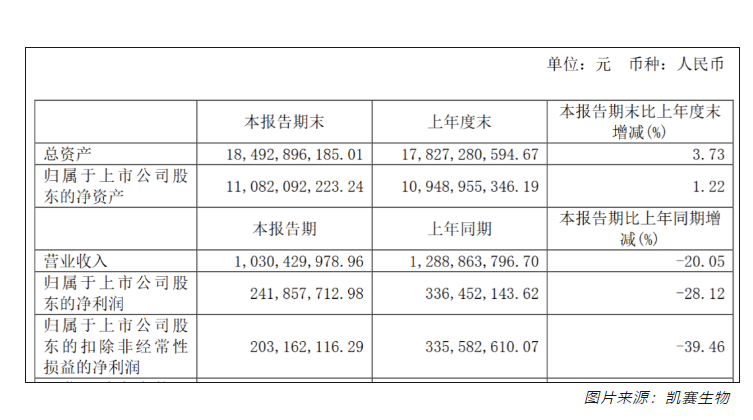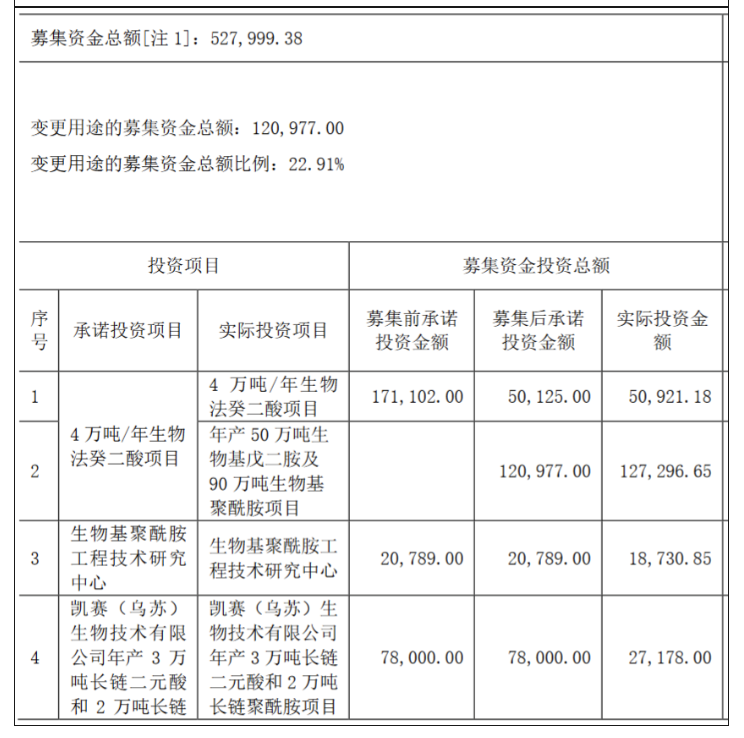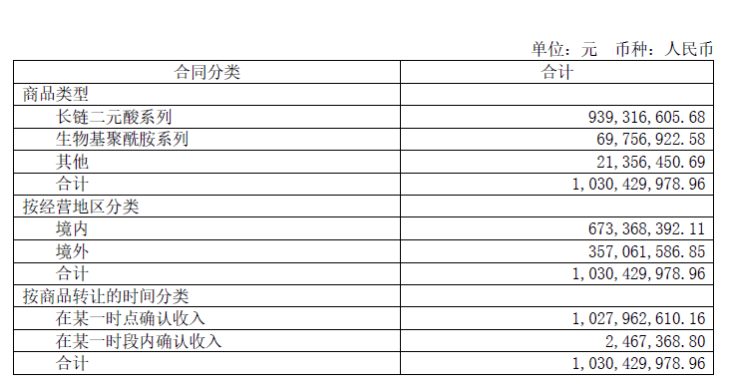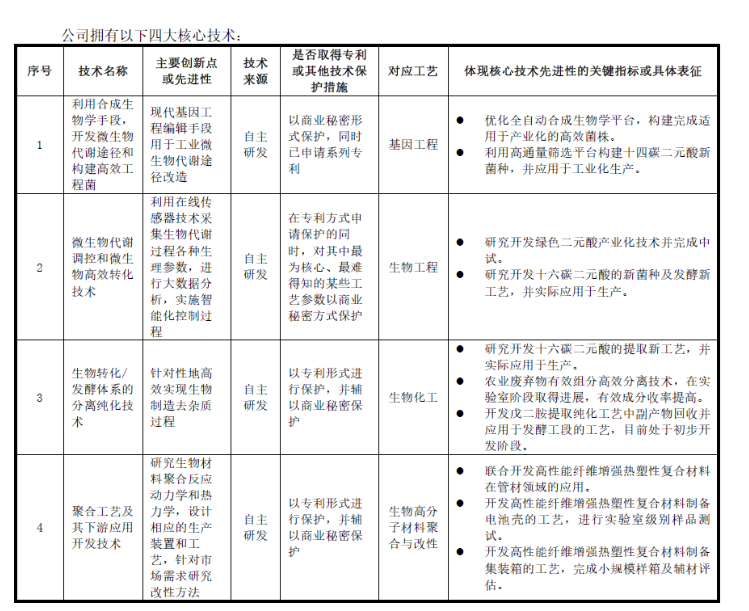On August 7, Cathay Biological announced that due to the weak downstream demand for long-chain dibasic acid series sales, the company achieved operating income of 1.03 billion yuan in the first half of the year, a year-on-year decrease of 20.05%; net profit was 242 million yuan , a year-on-year decrease of 28.12%.

At the same time, the company announced that it agreed to raise funds for the investment project “annual production of 500,000 tons of bio-based pentamethylenediamine and 90
The 10,000-ton bio-based polyamide project has been postponed from the previous December 31, 2023 to December 31, 2024. In addition, the company also announced some changes in the use of funds, including “40,000 tons/year” The implementation subject, source of funds, location, etc. of the annual bio-based sebacic acid project, as well as the change of the construction subject of the bio-based polyamide center.


Cathay Biotechnology has focused on the bio-based polyamide industry chain in recent years, mainly including bio-based long-chain dibasic acid series products and bio-based pentamethylenediamine, and large-scale bio-based polyamide production capacity is also under construction. However, from this semi-annual report combined with previous annual report information, Cathay Biotech’s performance and profitability are under pressure.
Specifically, in the first half of this year, the sales revenue of long-chain dibasic acid series was 939 million yuan, accounting for 91.2%; the sales revenue of bio-based polyamide series was 69.7569 million yuan, accounting for 6.77%.

Long-chain dibasic acid (LCDA)
Long-chain dibasic acids are mainly used in the preparation of polyamides, oils, spices, pharmaceutical intermediates, etc. In terms of synthesis, chemical methods were mainly used before, but in recent years, long-chain dibasic acid series products produced by biological manufacturing methods have gradually dominated the market due to their outstanding economical and environmental protection advantages. The company is currently the world’s leading supplier of bio-based long-chain dibasic acids. In terms of production capacity, the company currently has a series of biological long-chain dibasic acids (DC10-DC18), with an annual production capacity of
115,000 tons, the production lines are located in Cathay Jinxiang, Wusu Technology and Cathay Taiyuan. In addition, projects with an annual output of 30,000 tons of long-chain dibasic acid and 20,000 tons of long-chain polyamide are under construction.
Bio-based pentamethylenediamine
Bio-based pentamethylenediamine is mainly used as a raw material for the production of polyamide and other products, and can be used as a raw material in the fields of spinning, engineering materials, medicine, pesticides, organic synthesis, etc. Compared with nylon 66, double nylon produced with pentamethylenediamine as a monomer , with differential performance in terms of melting point, fluidity, dyeability, hygroscopicity, etc. In terms of production capacity, the company’s Wusu plant’s bio-based pentamethylenediamine project has an annual production capacity of 50,000 tons per year, realizing the world’s first large-scale production of odd-numbered carbon diamines. In addition, the company plans to build a production line with an annual capacity of 500,000 tons in the Taiyuan production base.
Bio-based polyamide
Although the polyamide products are still dominated by petroleum-based polyamides, in recent years, with the demand for sustainable development, bio-based polyamides have attracted worldwide attention. Through the breakthrough of bio-based pentamethylenediamine industrialization technology, Cathay Biotech can currently produce a series of bio-based polyamide products, including PA56, PA510, PA5X, etc. In terms of production capacity, the annual output of series of bio-based polyamides
10
10,000 tons, the production line is located in Wusu Materials. In addition, the company plans to build a bio-based polyamide project with an annual output of 900,000 tons. At the same time, the project with an annual output of 40,000 tons/year of bio-based sebacic acid has begun trial production, of which sebacic acid can be used as a polymerization monomer for the production of long-chain nylon, Sebacic acid esters and other products.

Company core technology
Although the current revenue is under pressure, the company just completed a round of nearly 6 billion yuan fixed increase in June this year. According to the semi-annual report, the monetary funds in the company’s account are currently 6.167 billion yuan, which is relatively sufficient. At the same time, China Merchants Group, a central enterprise, became a related party of the company through indirect holdings. The two parties also signed a relevant procurement agreement for bio-based polyamides, agreeing to purchase a total of no less than 290,000 tons of bio-based polyamide resins by 2025.



 微信扫一扫打赏
微信扫一扫打赏
